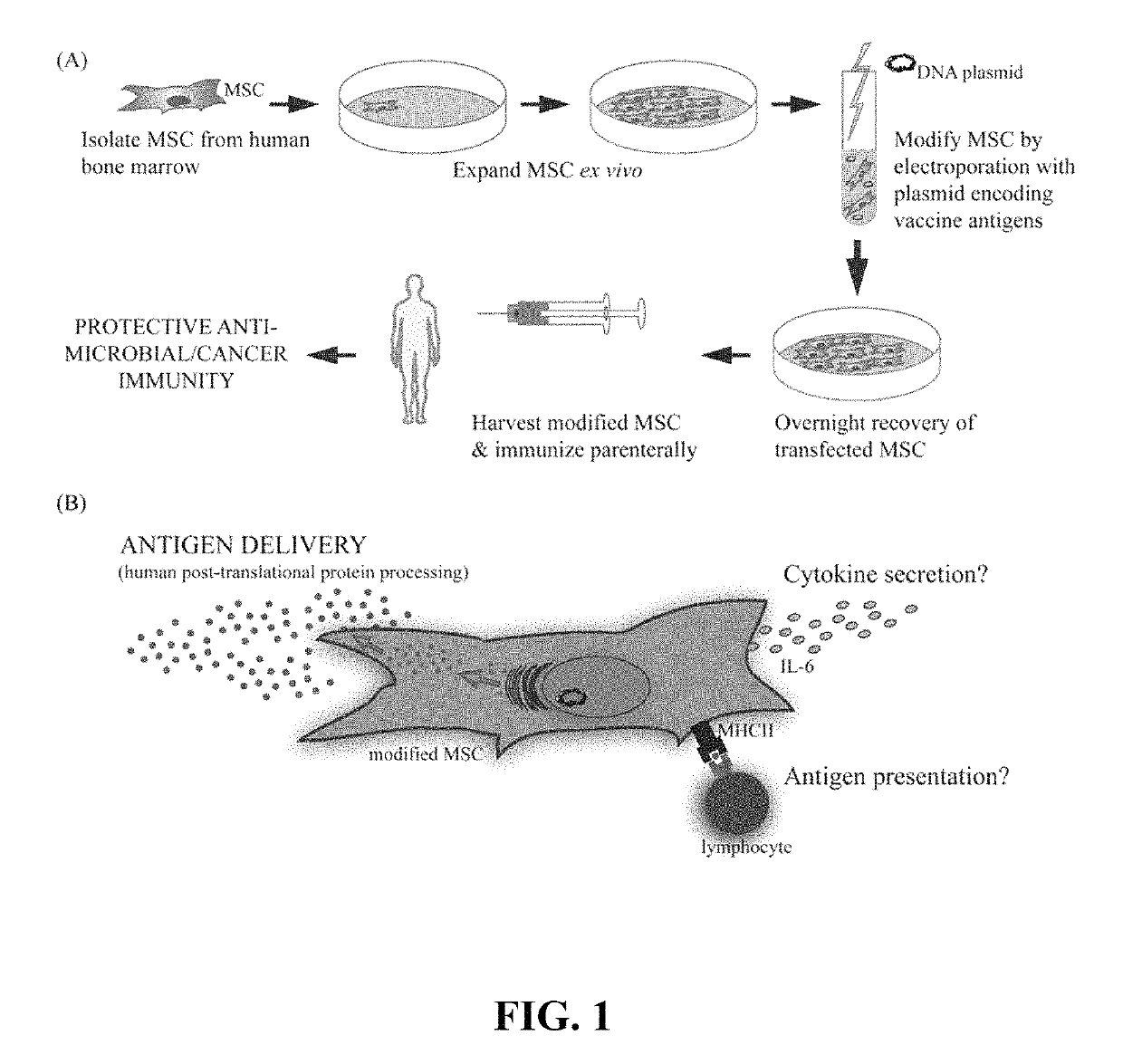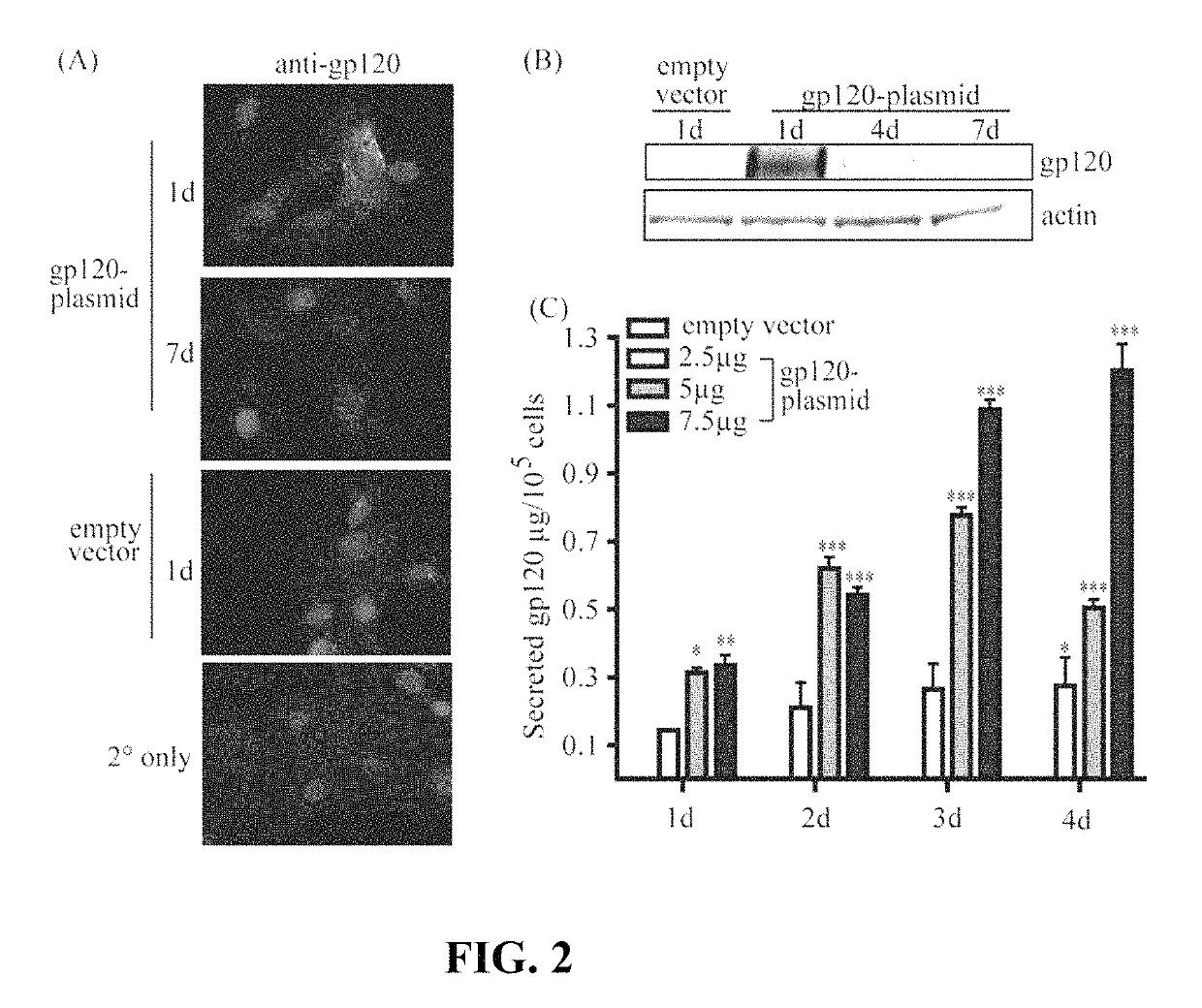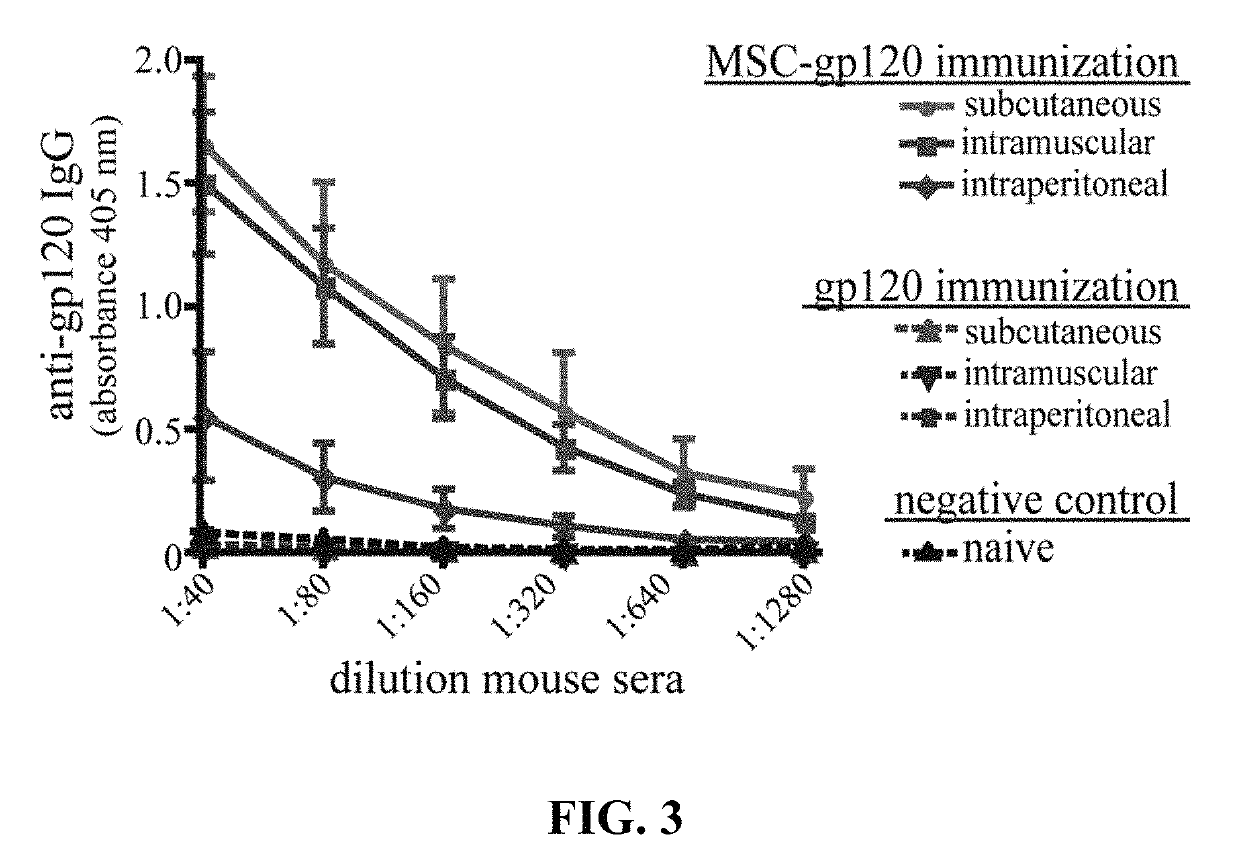Primary mesenchymal stem cells as a vaccine platform
a technology of mesenchymal stem cells and vaccines, applied in the field of vaccines, can solve the problems of long-term immunity against certain major pathogens, time and cost, and mice receiving either msc or protein vaccine alone were not able to raise an anti-e7 response or inhibit tumor growth of metastatic sarcoma
- Summary
- Abstract
- Description
- Claims
- Application Information
AI Technical Summary
Benefits of technology
Problems solved by technology
Method used
Image
Examples
example 1
[0052]MSC derived from the bone marrow of C57Bl / 6 mice were isolated and validated by the Tulane Center for Stem Cell Research and Regenerative Medicine (New Orleans, La.) as previously described (Ripoll and Bunnell, 2009). A total of 1×106 MSC were transfected by electroporation according to the manufacturer's instructions using the Invitrogen NEON system (Carlsbad, Calif.) with 2.5, 5 or 7.5 μg of a plasmid vector encoding gp120 (referred to herein as pSWTK-gp120) or empty vector (referred to herein as pSWTK), generously provided by Dr. V. S. Kalyanaraman of ABL Inc., Kensington, Md. FIG. 4 provides a plasmid map for the pSWTK vector, showing the schematic layout of the plasmid, including the insertion sites for the antigen. FIG. 5 provides the amino acid sequence of gp120 (SEQ ID NO: 1) encoded by the gene incorporated in the plasmid vector. 1. PCR fragments and the empty pSWTK plasmid (pSWTK-Empty) (restricted and unrestricted), were run on a E-GEL 2% agarose gel (Invitrogen) fo...
example 2
[0054]Groups of 5 female C57Bl / 6 mice (about 6-8 weeks old) underwent a single immunization with about 1×106 MSC transfected with about 7.5 μg pSWTK-gp120 (MSC-gp120) 16 hours post-transfection or 5 μg purified gp120, with naïve mice serving as a control. MSC and gp120 were diluted in DPBS and administered with a 0.5 mL syringe to deliver 100 μL per dose for intraperitoneal and subcutaneous injection, or 50 μL per dose for intramuscular injection. Mice were sacrificed 17 days post-immunization and sera collected. An ELISA for serum anti-gp120 IgG antibodies was performed as previously described (Norton et al., 2011). The ELISA results are provided in FIG. 3, graphed as 405 nm absorbance versus sera dilution (MSC-gp120 immunization results shown as solid lines; gp120 vector immunized mice, without MSC, shown as broken lines). Animal studies were approved by the Tulane University Institutional Animal Care and Use Committee.
[0055]The results shown in FIG. 3 clearly and surprisingly dem...
PUM
| Property | Measurement | Unit |
|---|---|---|
| time | aaaaa | aaaaa |
| size | aaaaa | aaaaa |
| bone density | aaaaa | aaaaa |
Abstract
Description
Claims
Application Information
 Login to View More
Login to View More - R&D
- Intellectual Property
- Life Sciences
- Materials
- Tech Scout
- Unparalleled Data Quality
- Higher Quality Content
- 60% Fewer Hallucinations
Browse by: Latest US Patents, China's latest patents, Technical Efficacy Thesaurus, Application Domain, Technology Topic, Popular Technical Reports.
© 2025 PatSnap. All rights reserved.Legal|Privacy policy|Modern Slavery Act Transparency Statement|Sitemap|About US| Contact US: help@patsnap.com



